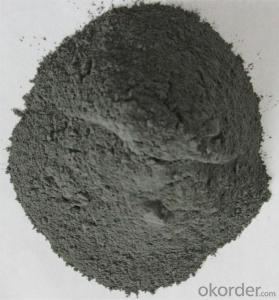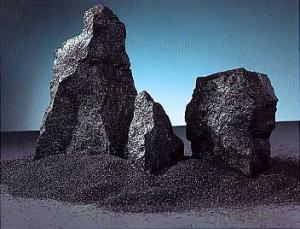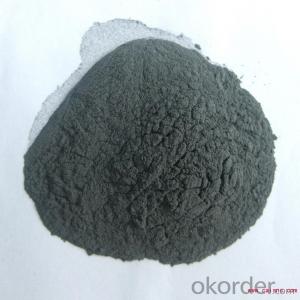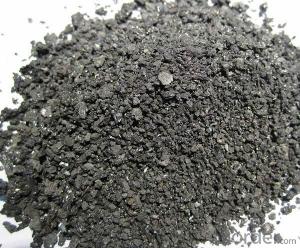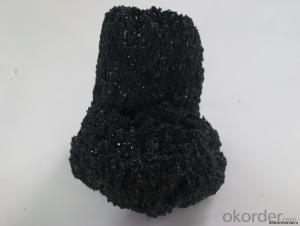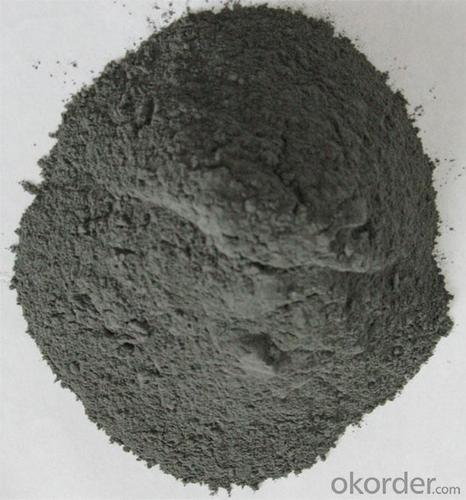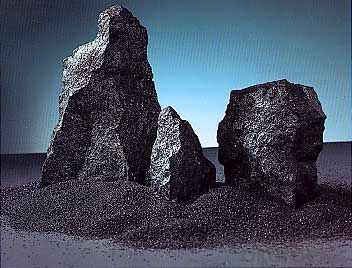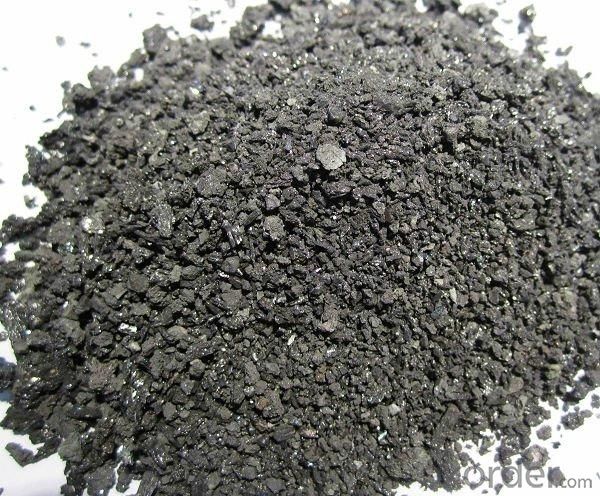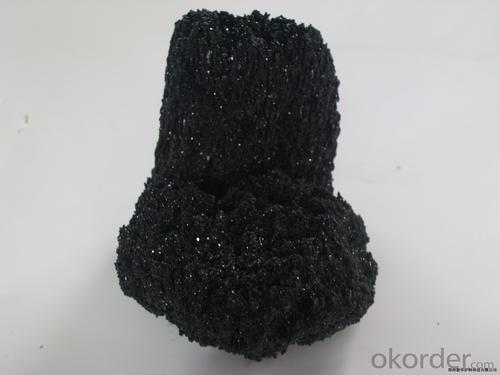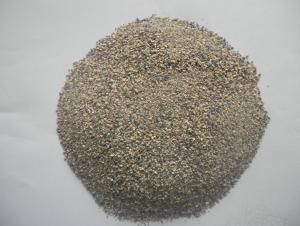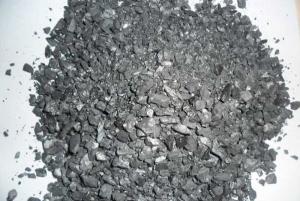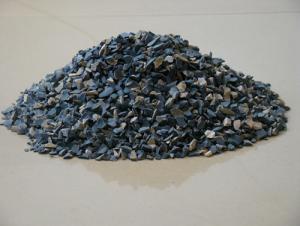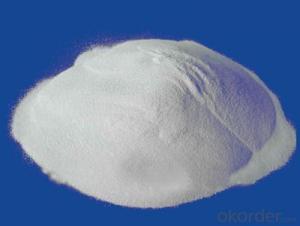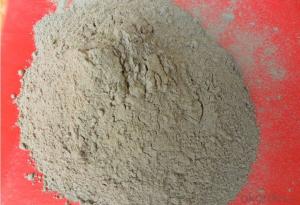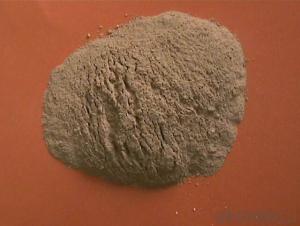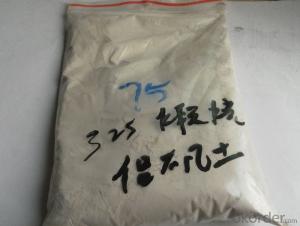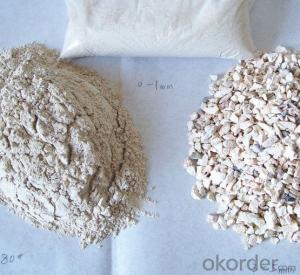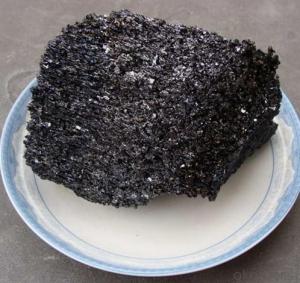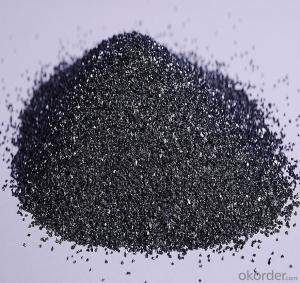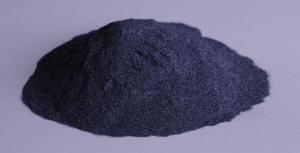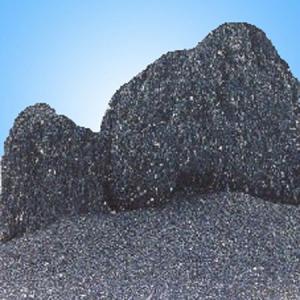Silicon Carbide/SiC Raw Materials for Refractory Minerals & Metallurgy
- Loading Port:
- Tianjin
- Payment Terms:
- TT OR LC
- Min Order Qty:
- 25 m.t.
- Supply Capability:
- 3000 m.t./month
OKorder Service Pledge
OKorder Financial Service
You Might Also Like
Silicon Carbide/SiC Composition in Minerals & Metallurgy
1.Structure of Silicon Carbide Description
Black Silicon Carbide is produced with high temperature in a electric resistant furnace from a mixture of quartz sand and petroleum coke.
Black silicon carbide is typically used for working on cast iron ,non-ferrous metals, stone, leather, rubber, and other materials which requires sharp cutting characteristics. The mineral is also used widely as a refractory material and metallurgical additive.
2.Main Features of the Calcined Bauxite
Its hardness is between that of fused alumina and synthetic diamond and mechancial intensity of it is also greater than that of fused alumina. It is brittle and very sharp and has a certain degree of electrical and heat conductivity.
3.Main usage of the Calcined Bauxite
1.Grinding non-ferrous materials, rock, stone, leather, rubber, finishing tough and hard materials
2.Bonded abrasive tools, lapping and polishing
3.Widely used as a metallurgical additive and refractory material
4.Refractory
4. Calcined Bauxite Images
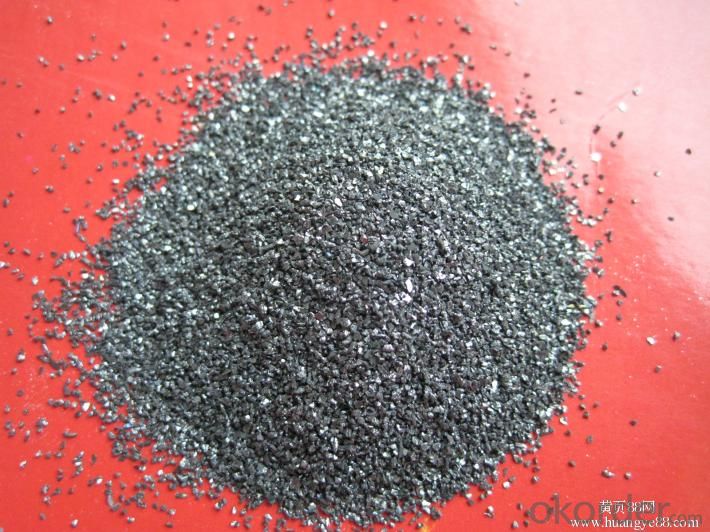
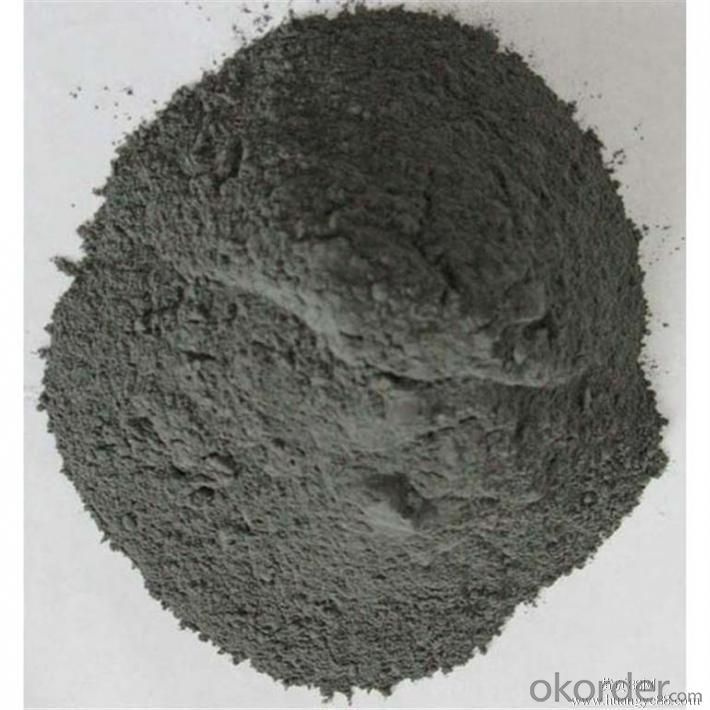
5. Calcined Bauxite Specification
1. corrosion resistance, high strength, high hardness,
2.good wear-resisting performance,resist to shock
3.stable chemical performance, high thermal conductivity, high resistant temperature
6.FAQ of Calcined Bauxite
1). Q: Are you a factory or trading company?
A: We are a factory.
2). Q: Where is your factory located? How can I visit there?
A: Our factory is located in Ningxia, China. You are warmly welcomed to visit us!
3). Q: How can I get some samples?
A: Please contact me for samples
- Q: Who know what kind of fire shutter fire rating are there?
- Fire resistance rating of the building elements is different due to the different requirements of the construction . Fire proof door can be divided into Serie A, B and C in terms of fire endurance limit, fire resisting limit are not should be less than 1.20h, 0.90h and 0.60h. That is, if the fire resistance rating is two, also it is possible to use a class a fire door. Hope my answer will help you.
- Q: Who knows the model of fireproofing materials?
- Inorganic binder: it mainly includes sodium silicate, gypsum, phosphate, cement,etc; refractory mineral filler: aluminium oxide, asbestos powder, calcium carbonate, perlite, cornstarch,etc; nonflammable organic resin: it mainly includes polyvinyl chloride, perchloro-ethylene, chlorinated rubber, neoprene latex, epoxy resin, phenol resin,etc. Nonflammable fireproof addictive: it mainly includes phosphorus, halogens, nitrogen organic compounds (chlorinated paraffins, TBP ( tributyl phosphate ), decabromodiphenyl ether), and borate series (boric acid, zinc borate, aluminium borate), antimony series, aluminium series, zirconium series and other inorganic compounds.
- Q: What's the maximum temperature that the refractory ceramic fiber cloth can endure?
- While the refractory ceramic fiber cloth is different in high temperature resistance, and in general it can endure the high temperature of more than 1000℃. Ceramics in daily use and art ceramics: Bone china and Guangdong chinaware can generally endure the highest temperature of 1100℃. Jingdezhen porcelain and ceramics: They can generally endure the highest temperature of 1280℃-1340℃, and some special ones can endure the highest temperature of 1400℃. Industrial ceramics: Some of them can endure the highest temperature of about 2600℃. (alumina ceramics: their melting point is 2050℃, and boiling point is 3000℃).
- Q: Is there vermiculite in refractory?
- In refractory field, vermiculite is usually used as fireproof thermal insulation material.
- Q: How to classify the grade of wall fireproof and thermal inuslation matertial?
- The level classification of wall fireproof and thermal inuslation matertial: Grade A: incombustible building material: Material almost with no combustion. Grade B1: nonflammable building material: Nonflammable material has good flame resistance. It is difficult to fire in case of fire in the air or at high temperature. It is not easy to quickly spread. After the fire source is removed, combustion stops immediately. Grade B2: combustible?building?material: Combustible materials have a certain flame resistance. It will immediately burst into flames in case of fire in the air or at high temperature and is easy to lead to the spread of fire, such as wooden column, timber roof truss, timber beam, wooden stairs, etc. Grade B3: Flammable building material: It has no flame-retardant effect and is highly flammable. Fire hazard is very large.
- Q: Does the refractory material used in steelmaking all refer to refractory brick?
- For example, refractory castable doesn't only refer to refractory brick, but also some bulk material and ramming?mass. Desulfurizer belongs to ferrous metallurgy auxiliary material.
- Q: How is the performance of refractory materials?
- It is a little difficult to answer. There are some requirement for refractory materials, such as fire resistance, softness, creep, thermal shock, abrasive resistance. Besides, requirements for construction performance include: Liquidity, plasticity and other linear change rate, volume density, strength (including high temperature) and all other important indicators must be tested the same conditions with the use of test conditions and test items like body density, strength, line changes in the basic project
- Q: Which are roofing fireproofing material?
- (1) Foamed concrete is a kind of fire-proof thermal inuslation matertial featured by good fire resistance and thermal insulation. Besides, it is also characterized by excellent sound proofing, penetration resistance, easy construction, safety and environmental protection without toxin and pollution. (2) Foam glass is featured by light weight, small heat conductivity coefficient and water absorbption, non-inflammability, fire resistance, high strength, no moulding, corrosion resistance, non-toxin and stable physical and chemical properties and thus widely used petroleum, chemical engineering and underground construction. It is also featured by thermal insualtion, heat/cold preservation and sound absorbption and thus can be used for thermal insulation of external wall and roof of civil builduing. Foam glass is featured by stable chemical property, easy to be processed and not easy to deforme, and durable. (3) With slag, basalt and other natural ore as the main raw material, rock wool, mineral wool and its products are made by high temperature melting into fiber, and then processing with binder. It has low thermal conductivity, fire resistance, easy construction and good effects of energy saving and thus is highly cost-effective. (4) With phenolic foam material as main material, phenolic resin plate is made by foaming thermoset phenolic resin. It is featured by light weight, fire resistance, no burning in the air, no smoking, non-toxin, no dropping and non-embrittlement and thus is an ideal thermal insulation material used in HAVC projects. Due to its high obturator formamen rate, low heat conductivity coefficient, good thermal insulation, water resistance and water vapor permeability, phenolic foam is an ideal thermal insulation material.
- Q: What's the heat conductivity coefficient, specific heat capacity and density of the refractory material of magnesite-chrome brick and magnesia-alumina brick respectively?
- It is suggested that you find some samples of well-known manufacturers, such as Ogilvy and Mather Group, and that will be more correct.
Send your message to us
Silicon Carbide/SiC Raw Materials for Refractory Minerals & Metallurgy
- Loading Port:
- Tianjin
- Payment Terms:
- TT OR LC
- Min Order Qty:
- 25 m.t.
- Supply Capability:
- 3000 m.t./month
OKorder Service Pledge
OKorder Financial Service
Similar products
Hot products
Hot Searches
Related keywords
